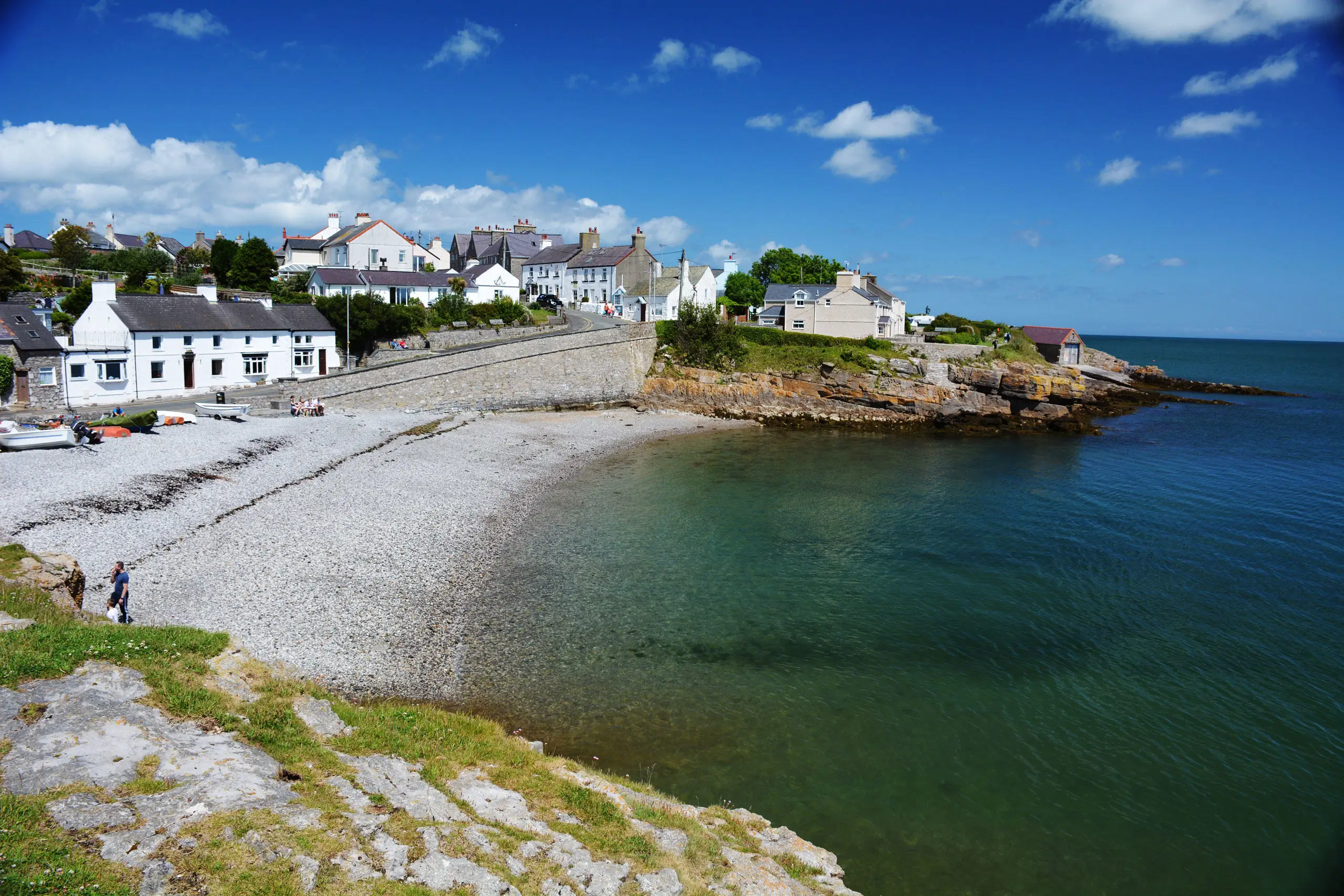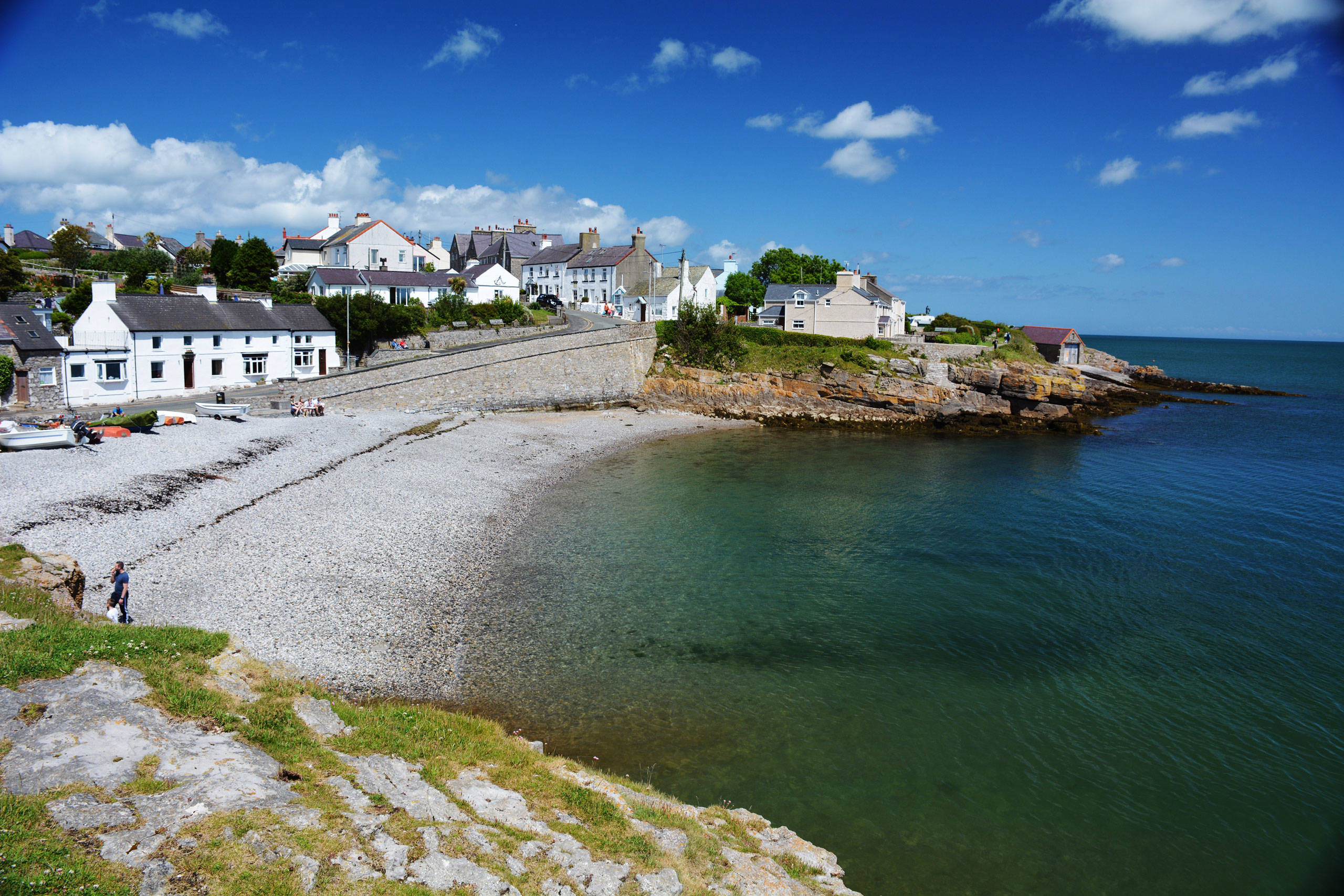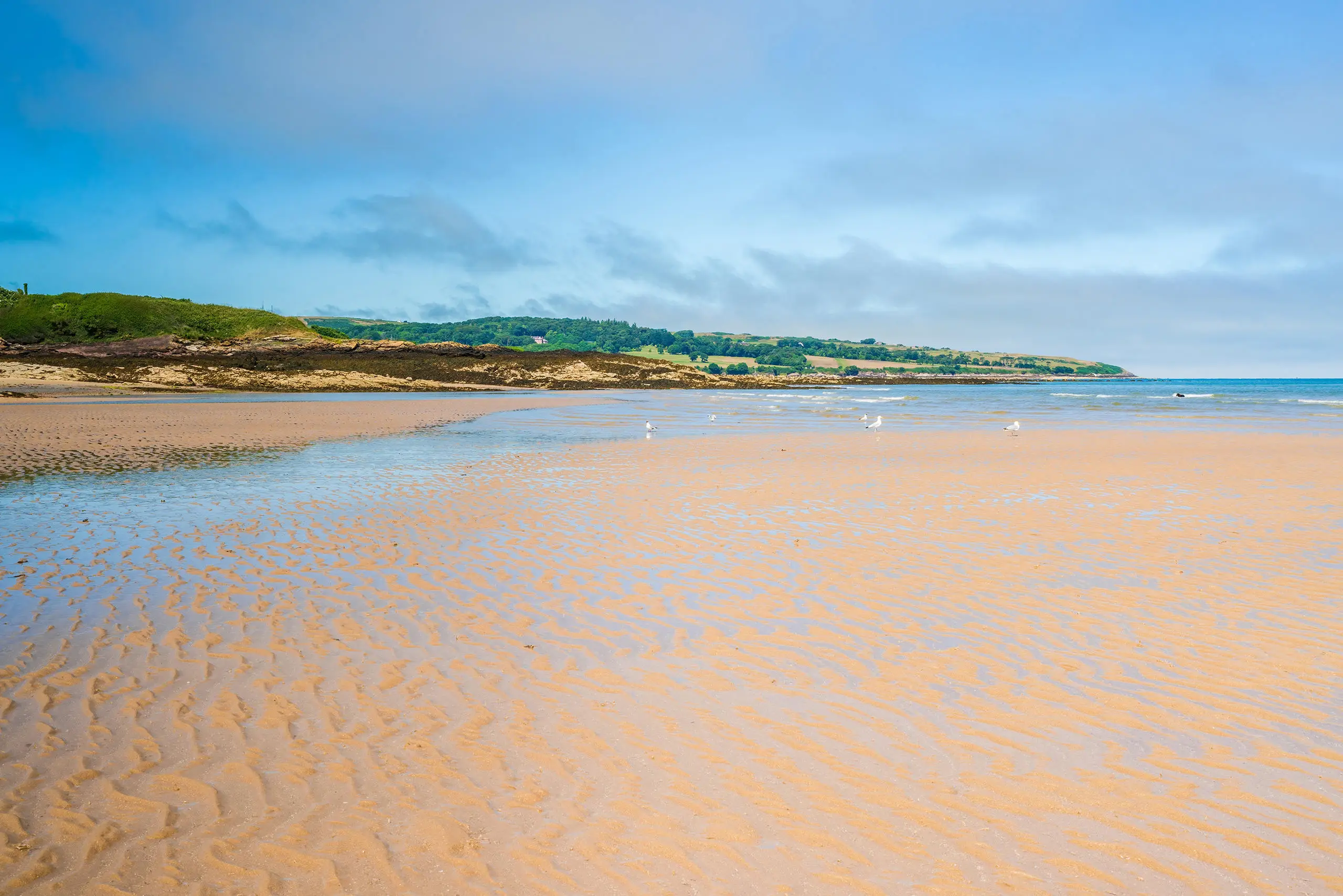For Cemlyn Bay, see the Anglesey West coastal tour.
Cemaes, near Cemlyn Bay, is Wales’s most northerly village. It’s a picturesque spot, with a sheltered stone quayside and perfect crescent of sand. Much of the coast here is in the care of the National Trust. This includes the headland near Llanbadrig overlooking the eastern entrance to Cemaes Bay, occupied by an ancient church dedicated to St Patrick, Ireland’s patron saint.
Take the A5025 east to Bull Bay, a sheltered cove and small village that takes a nibble out of Anglesey’s rugged north coast.
Then it’s on to neighbouring Amlwch. It’s difficult to imagine those bygone times when Amlwch’s narrow, confined harbour (not, it has to be said, a particularly commodious haven) was one of Wales’s busiest ports, exporting vast amounts of copper ore from nearby Parys Mountain. How did they manage it?
The story of Amlwch’s raucous 18th and 19th century ‘Wild West’ heyday – apparently its 6,000 inhabitants had a choice of over 1,000 ale houses – is told at Copper Kingdom and Sail Loft heritage centres.
The unusual building that looks like the hull of an upturned boat has nothing to do with our earlier mention of shipwrecks. It is, in fact, the Roman Catholic church, built in the 1930s.
Lunch: Amlwch has a range of cafe's for gourmet coffee and homemade goodies.


